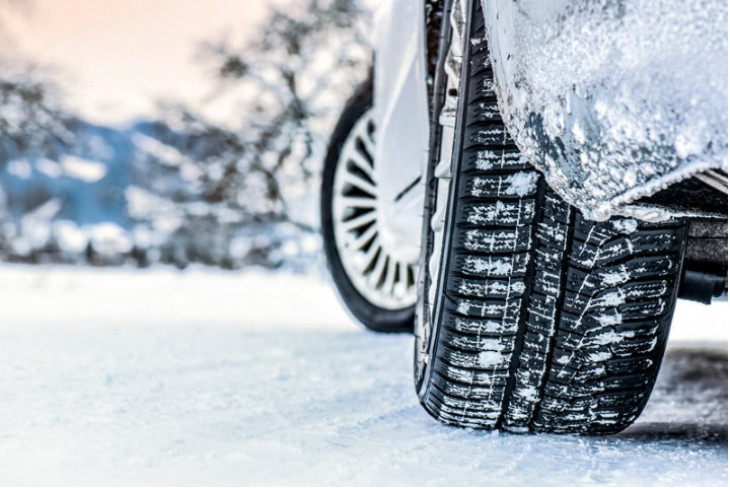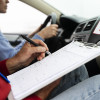By The Acclaim Team on 05th November 2024 in News
How to Drive an Automatic Car in the Snow
Driving an automatic car in snowy conditions can feel overwhelming, especially if you don’t encounter these types of driving situations often. Snow, ice, and the bitter cold all add extra layers of complexity to something that’s typically second nature. The roads become less predictable, visibility drops and traction is reduced, making even simple tasks like accelerating or turning feel more delicate. It’s perfectly normal to feel nervous about driving in snow, but with a little preparation, a calm mindset, and some winter-specific techniques, you can confidently navigate even the trickiest of winter roads.
Whether you’re just starting out or have some experience but want to feel more confident in tricky weather, we’ll help you master the techniques that will keep you safe. With a steady pace and the right knowledge, you’ll gain the confidence you need to handle snowy and icy roads with ease, even if the weather isn’t exactly on your side. So, take a deep breath, and let’s get started with the basics of how to drive an automatic car in the snow.
Preparing Your Car for Winter Driving
Safe driving begins before you even get in the car, especially when you're heading out in wintry conditions. A little extra preparation can go a long way in ensuring you're ready to tackle snow and ice safely.
First, if possible, equip your car with winter tyres. While they may seem like an extra expense, they’re designed for cold weather and provide better traction on icy and snow-covered roads. The unique tread and softer rubber of winter tyres help grip the road better than regular tyres, offering you more control and confidence on slick surfaces.
Next, take the time to clear all snow and ice from your car. This means removing snow from your windows, mirrors, lights, and even your roof. Leaving snow on your roof can create hazards, as it can slide down onto your windshield or blow off and obstruct other drivers. Ensuring your lights are clear will also make sure you're visible to others and your own visibility remains intact.
It’s also important to check your car’s fluids and battery before heading out. Cold weather can drain your battery faster, so make sure it’s fully charged. Also, use winter-rated windshield washer fluid—it won’t freeze in the cold, ensuring you can clear any slush or snow from your windshield if needed.
Lastly, don’t forget a simple winter emergency kit. Having an ice scraper, a blanket, a flashlight, and some snacks can be a lifesaver if you get stuck or need to wait for help. Taking just a few extra minutes to prepare your car for the conditions will make a huge difference in your safety and give you peace of mind on the road.
Starting and Setting Off Smoothly
When you're ready to begin your journey in snowy conditions, the key to staying safe is to start off smoothly and avoid any sudden movements. Snow and ice make roads much more slippery, and if you're not careful, your tyres could spin, causing you to lose traction. To prevent this, be gentle with your accelerator. Press down lightly on the gas pedal, allowing the car to ease forward rather than jerking it into motion.
Automatic cars are especially sensitive in these conditions, as they don’t require manual gear shifts, but this also means that the car can sometimes react more quickly than you intend. A slow, steady start will help prevent unnecessary wheel spin and give you better control.
Many automatic cars also come with a lower gear setting, often labelled as “L” (for low) or “2.” These settings are a great tool when driving in snow because they limit the car’s speed and provide more power to the wheels without the risk of accelerating too quickly. By using these lower gears, you’ll be able to maintain better traction as the car is less likely to slip or skid on icy surfaces. It’s a simple but effective way to prevent sudden wheel spin when you’re starting from a stop, especially on an incline or in areas where snow is packed down or icy.
It’s also important to make sure your car's traction control system is switched on. Most modern cars come equipped with this feature, which is designed to help prevent your wheels from spinning when the road conditions are slippery. Traction control works by reducing engine power or applying brakes to specific wheels that are slipping, which helps keep you in control of the vehicle.
In winter weather, this system is incredibly useful, and you’ll want to make sure it’s on unless the conditions are very specific (like deep snow, where you might need a bit of wheel spin to keep moving). Keeping traction control activated gives you an extra layer of security, allowing you to maintain stability while you drive through snow or slush.
By focusing on smooth, gradual movements when you start, using the right gear settings, and keeping your traction control system active, you'll set yourself up for a much safer and more controlled drive. Taking these small precautions can make a big difference in how your car performs in slippery conditions and help you feel more confident as you drive.
Maintaining Traction and Control
Once you’re on the road in snowy or icy conditions, it’s important to stay calm and take things slow. The snow-covered roads can make it tricky for your tyres to grip, so reducing your speed is key. It might mean you’ll be running a little later than usual, but that’s okay—arriving safely is always more important than rushing. Give yourself extra time to react and adjust to the changing road conditions. The slower you go, the easier it will be to maintain control of the car, and you’ll have more time to notice any hazards or obstacles that might appear unexpectedly.
It’s also crucial to avoid any sudden moves. Whether you’re braking, accelerating, or turning, quick actions can easily cause you to lose traction and lead to a skid. Instead, try to make everything as smooth and gradual as possible.
When you need to slow down, start braking gently well in advance and keep a light pressure on the pedal. Don’t wait until the last second to stop, and don’t slam on the brakes suddenly. Likewise, when you accelerate, ease into it gently. A quick press on the pedal could cause your tyres to spin on the ice, making it harder to keep control. And when it comes to steering, try to make smooth, slow turns. Quick jerks of the wheel can throw off your balance and cause your car to slip.
Another important tip is to leave plenty of space between you and the car in front of you. Snow and ice can significantly increase your stopping distance—sometimes doubling or tripling it—so having extra space will give you more time to react if something goes wrong. If the car ahead suddenly stops or slows down, you’ll have more time to brake gradually without skidding. It also gives you some extra breathing room if visibility is low, like during a snowstorm or if the roads are particularly slick.
In snowy conditions, the goal is to keep your tyres as connected to the road as possible. By reducing your speed, making slow, controlled adjustments, and giving yourself plenty of space, you’ll be far better equipped to maintain control and avoid accidents. It’s all about being patient and taking things step by step—there’s no rush when the conditions are challenging. Just stay calm, and you’ll get to your destination safely.
Braking on Snow and Ice
Braking in snowy or icy conditions can be one of the most challenging aspects of winter driving. With reduced traction, it's much easier to lose control when trying to stop. That’s why it’s important to approach braking with care and use a light, steady touch when you need to slow down or stop. Relying on sudden, forceful braking is a recipe for disaster, as it can cause your wheels to lock up, especially on icy surfaces. Instead, press the brake pedal gently and allow the car to slow down gradually, giving yourself enough time to respond to any changes in road conditions.
If your car is equipped with an anti-lock braking system (ABS), you’re in luck. ABS is designed to help you maintain control of your car when braking hard. It prevents the wheels from locking up by rapidly pulsing the brakes, allowing you to steer even as you slow down. While ABS can be incredibly useful, it’s still essential to brake gently—especially on slick surfaces. You may feel the pedal pulse under your foot when ABS is engaged but don’t panic. This is perfectly normal and part of the system’s function to prevent skidding.
It’s also a good practice to ease off the gas before applying the brakes. By taking your foot off the accelerator earlier than usual, you allow the car to gradually reduce its speed without needing to hit the brakes as hard. Think of it as “coasting” to a stop rather than waiting until the last second to slam on the brakes. This smooth approach helps prevent wheel spin and gives your tyres more time to grip the road as you slow down.
Handling Hills in Snow
Snowy hills in an automatic car can feel intimidating, but with a little preparation and the right techniques, you can handle them confidently and safely. Whether you’re heading uphill or downhill, the key is to manage your speed and avoid any sudden movements that could cause your car to lose traction on the slippery surface.
When driving uphill on snow, the first step is to build some momentum before you reach the incline. This allows you to ascend smoothly without having to suddenly press the accelerator hard halfway up, which can cause your tyres to spin.
In an automatic car, the transmission can sometimes shift unexpectedly, so getting a gentle push beforehand helps you maintain a steady, controlled speed as you climb. If you’ve already got a little momentum, you’ll be able to maintain your speed without overloading the engine. It’s important to keep your foot lightly on the accelerator and avoid heavy pressure—acceleration should be smooth and gradual to prevent wheel spin.
If you’re approaching a hill, try to avoid stopping if possible. Stopping halfway up can be difficult, as it might be hard to regain traction once the car comes to a complete halt. If you must stop, shift into a lower gear as soon as you begin moving again, which will help you move forward without too much struggle. Keeping a steady pace and maintaining momentum is key for a smoother uphill drive in snowy conditions.
When heading downhill, the principles are similar but with a focus on controlling your speed. Instead of relying too much on the brakes, shift your car into a lower gear (again, “L” or “2” if available). In automatic cars, these gears engage the engine to help slow the car down, allowing you to control your descent without the need for heavy braking. Relying too much on the brakes on a downhill slope can cause the car to skid, especially if the road is icy. Light, gradual braking is essential, and it’s important to apply just enough pressure to maintain control. A smooth, steady speed is crucial here as well—avoid any sudden braking or acceleration that could unsettle the vehicle.
Reacting to a Skid
Skidding on snow or ice can be a stressful experience, but it’s important to stay calm and react correctly to regain control. The first step is to breathe and resist the urge to slam on the brakes, as this can worsen the skid. Instead, gently steer in the direction of the skid. If the back of your car slides to the right, steer right; if it slides left, steer left. This is called "steering into the skid," and it helps realign the wheels and straighten the car’s path. It may feel counterintuitive, but it’s the best way to regain control.
At the same time, take your foot off the accelerator. Let the car’s momentum slow naturally—don’t try to accelerate or make sudden movements, as that can make the wheels spin and prolong the skid. If your automatic car has ABS (anti-lock braking system), let it do its job. ABS will prevent the wheels from locking, allowing you to steer while gently braking if needed. However, if your car doesn’t have ABS, you can gently pump the brakes to regain traction, but be careful not to overdo it.
Remember, skids happen to every driver, even the most experienced. They’re a normal part of winter driving, and the key to managing them is staying calm and responding gently. With practice, you’ll react instinctively, and skids will no longer be a cause for panic. Just keep calm, steer into the skid, and let the car slow down on its own. The more you practice, the more confident and capable you’ll become in handling these slippery situations safely.
Parking and Exiting Safely in Winter Conditions
Parking in snowy and icy conditions can be tricky, but with a little thought, you can make it much safer. First and foremost, try to park in a flat area if you can. Parking on an incline—especially in snowy or icy conditions—can increase the risk of your car sliding. If you absolutely need to park on a slope, make sure to take extra care when getting in and out of the vehicle, as even a slight shift can cause the car to slide.
Bonus Tips for Snowy Weather
Before setting out, always check the weather forecast and road conditions. Snow and ice can quickly make driving more challenging, so it’s good to be aware of what to expect. Keep an eye out for other drivers who might be less comfortable in the snow, and drive defensively to protect yourself and others on the road. And remember to keep a few extra supplies in the car, such as gloves, a hat, and an extra blanket. It’s better to have them and not need them than the other way around.
Automatic Driving Lessons with Acclaim
Driving in the snow with an automatic car doesn’t have to be stressful or intimidating. By following these tips, you can keep yourself and your passengers safe, even in winter’s trickiest conditions. Remember, the most important thing is to take it slow, be patient, and stay calm.
If winter driving seems intimidating or you’re new to automatic cars, Acclaim can provide you with the skills, confidence, and knowledge you need to drive safely in challenging conditions. At Acclaim, we offer dedicated automatic driving lessons for everyone—whether you’re learning to drive for the first time, transitioning from manual to automatic, or simply looking to improve your winter driving abilities. Our experienced instructors understand the unique demands of winter weather and know how to guide you through essential winter-specific techniques, helping you prepare for icy roads, low visibility, and slippery conditions.
We understand that winter driving can be nerve-wracking, especially for newer drivers, and our instructors take pride in creating a supportive and calm learning environment. We encourage questions, provide real-time feedback, and guide you patiently through each step. With Acclaim by your side, you’ll be ready to take on winter driving with confidence and competence, knowing that you have the knowledge and techniques necessary to handle snowy roads safely.
If you’re interested in mastering the art of winter driving in an automatic car, contact Acclaim today to schedule your lessons. Let us help you feel safe, secure, and fully prepared for winter road conditions so you can look forward to driving with confidence all season long.




